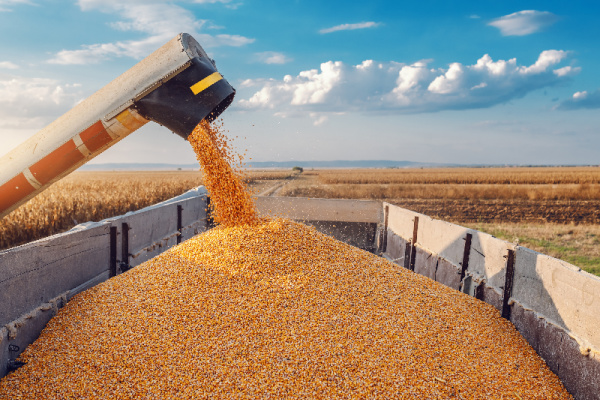Worst Corn Yield Since 2012?

The USDA estimated a national average corn yield of 175.1 bushels per acre in August. While there will be several adjustments and revisions over the next several months, the current estimate, at least by one measure, pegs the 2023 crop as the worst since 2012.
Departure from Trend
Long-time readers will recall that measuring annual yields as a departure from the trendline is helpful when comparing yields across several decades. The measure is simply how far above or below the trendline the yield is for a given year (You can read more in the 2023 Corn Yield Guide – here or here.) For example, the trendline yield for 2023 – using data since 1988 – is 181.6 bushels per acre. With the USDA’s current estimate at 175.1, this puts the 2023 crop at 6.5 bushels below trend. Now we can consider how the 2023 yield stacks up.
Figure 1 plots the annual yield departures from the trendline since 1988. At 6.5 bushels below trend, 2023 yields are the lowest since 2012. Despite 2022 having a lower posted yield (173.3bpa), that year was only 6.2 bushels below trend. This is because the slope of the trendline increases by 2.08 bushels per year. Another similar year was 2019 when the posted yield (167.5bpa) was 5.8 bushels below the trendline.
Another insight is that 2023 stands to be the fifth consecutive year with below-trend yields. This is important to remember when reflecting on commodity prices in recent years. In addition to the conflict in Ukraine and China importing U.S. corn – to mention a few headlines – the U.S. hasn’t raised an above-trend corn crop since 2018.

Figure 1. U.S. Corn Yields, Annual Departure from the Trend Line, 1988-2023 (2023 denoted in Orange). Data Source: USDA’s NASS and AEI.ag calculations.
Another way to size up the 2023 yield situation is to re-organize the annual departures from the trendline from lowest to highest (Figure 2). By doing this, we can see that the current 2023 yield estimate is the 7th lowest in 35 years of data or the 20th percentile. Stated differently, 80% of the yields observed since 1988 were higher when measured as a departure from the trendline.
Figure 2 also highlights the downside outcomes with corn yields. Yields in 2012 (-36.0 from the trendline), 1988 (-23.7 from the trendline), and 1993 (-18.2 from the trendline) were demonstrably worse than the next rung of outcomes.

Figure 2. Distribution of U.S. Corn Yields, Departure from Trend (1988-2023) (2023 denoted in Orange). Data Source: USDA NASS and AEI.ag calculations.
Wrapping It Up
It’s unclear where 2023 corn yield estimates will go from here, but it’s worth considering how the current estimate of 175.1bpa compares to historical observations. While the final yield can certainly be lower, history shows that corn yields approaching or falling below, say, 10 bushels below the trendline is pretty rare.
These charts also highlight how burdensome the corn acreage situation has been to its balance sheets. Had we known at the beginning of 2023 that U.S. corn yields would be estimated at 6.5 bushels below the trendline, very few of us would have anticipated the increase in ending stocks.
Lastly, the data highlights just how distorting comparisons to 2012 can be. While it’s mathematically true that current estimates put the 2023 corn crop as the most negative departure from the trend since 2012, current conditions and yield estimates are nowhere near the 2012 situation. This is because the tail-end outcomes are quite wide, especially to the downside.
Since 1988, nearly half (49%) of U.S. corn yields have been within five bushels of the trend line. Stepping out just a bit, 77% of corn yields have been within 10 bushels of the trendline (higher or lower). In short, 2012-like outcomes are significant because of their rarity and magnitude.